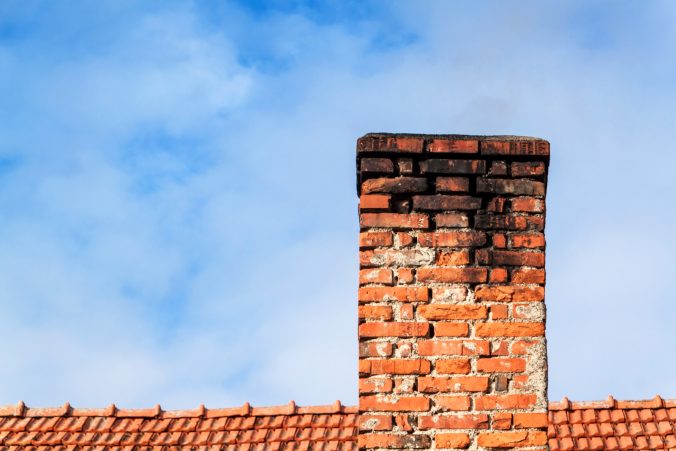During the cold winter months, many homeowners like using their fireplaces and chimneys without giving any thought to annual maintenance and repair. On a cold winter evening, the smell of a wood fire coming from a brick fireplace makes one think about chestnuts roasting over an open fire and Jack Frost nipping at your nose as mentioned in The Christmas Song sung by Nat King Cole. During the holidays, hanging Christmas stockings on the mantle and burning the old-time Yule log isn’t much fun if the fireplace and chimney cannot be used.
Some homeowners perform annual chimney cleanings but they do not thoroughly inspect the fireplace and chimney. This type of maintenance neglect often leads to expensive fire damage and loss of human life. Annual chimney cleaning and maintenance can save thousands of dollars. Within a few hours, and spending about $300, by adding a chimney cap and sealing the bricks and crown, the life of the chimney is extended.
The best way to perform chimney and fireplace maintenance is to hire a trained professional called a chimney sweep to perform a certified cleaning and inspection of the fireplace and chimney. However, a skilled DIY homeowner can perform some of the annual maintenance tasks by learning useful maintenance tips. Learn the parts of the fireplace and the chimney in order to be informed about proper operation and maintenance.
Fireplace maintenance and repair tips:
To avoid a possible house fire, perform annual maintenance on the fireplace and chimney system. Annual cleaning of the fireplace and chimney will help to avoid creosote buildup, carbon monoxide, and avoids a house fire. Millions of dollars in fire damage can be avoided and human lives can be saved by performing annual maintenance and repair tasks. Inspect the fireplace for cracks and repair damaged mortar joints. Repair cracks, missing mortar, loose bricks, and broken mortar joints. Inspect the damper, flue, and vents. A poorly operating flue can lead to soot and creosote buildup and noxious fumes.
Chimney maintenance and repair tips:
Approximately 61 house fires in the U.S., on a daily basis, begin with a dirty or poorly maintained chimney. When the creosote buildup in a chimney reaches a ¼ inch or more buildup, have it cleaned. Monitor the chimney’s mortar joints for cracks. This is where deterioration begins, water damage occurs, and mold can grow. Water damage begins with cracks inside and outside of the chimney near the crown, cap, and chimney flashing. From the top down into the chimney water and moisture damage continues. Use mortar mix and a pointing trowel to repair chimney cracks. Better yet, hired a trained professional tuckpointer to repair and seal the cracks. Ensure that chimney flashing gaps are sealed and replace damaged flashing, caps, crowns, and vents. Water mixing with creosote buildup becomes acidic and causes rusting of the damper and speeds up the deterioration of the brick and mortar within the chimney and fireplace. Remove bird and squirrel nests from the chimney cap. Make sure there is a mesh cover, or chimney cap, and keep it clear of nests, leaves, and debris. A chimney cap prevents rodents from entering the home, keeps out moisture, and protects the roof from burning embers and starting a house fire. Be safe and perform annual fireplace and chimney maintenance.
